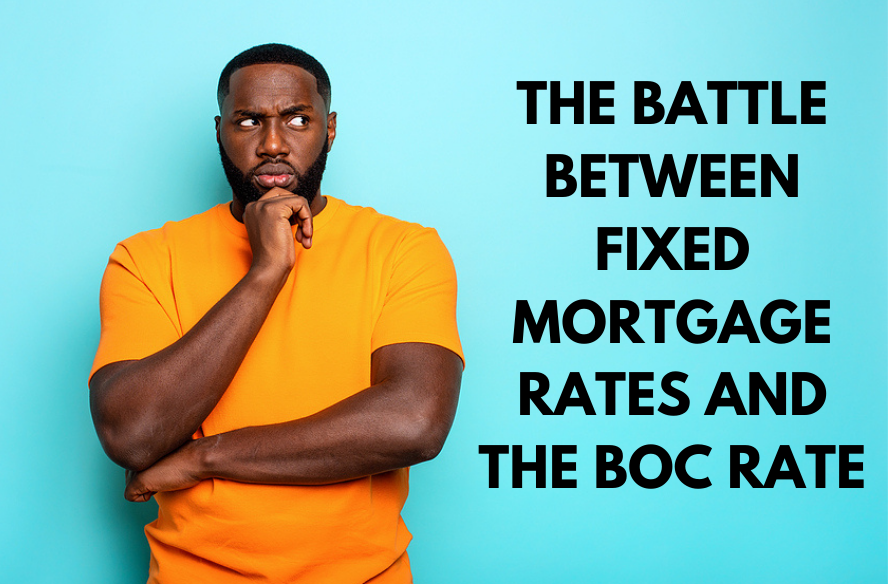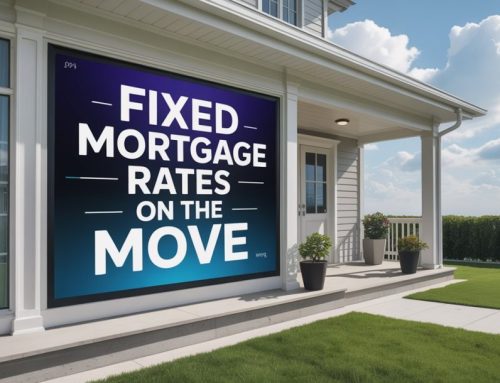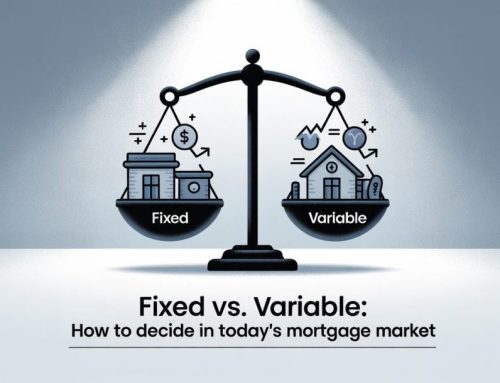It’s a common belief that the Bank of Canada rate is connected to fixed mortgage rates, however the two are unrelated. We’re seeing a clear example of this in today’s market, as fixed mortgage rates have been rapidly rising, while the Bank of Canada rate remains unchanged.
But why?
The Bank of Canada will base its forecast on long term speculation, while fixed mortgage rates will move based on a shorter-term outlook. The Bank of Canada has eight scheduled rate announcements per year, where fixed rates have no scheduled announcements and can move at any time, with no limit on how often they can move. They can remain unchanged for months, or they can move multiple times per day (although quite rare).
Fixed mortgage rates have been trending upward for the past month, and have increased 0.50% over their all-time historical lows that were available until late February. Fixed mortgage rates are largely determined by bond yields, which have been trending upward since February 1st. When bond yields move, fixed mortgage rates will generally follow.
Why Are Fixed Mortgage Rates Rising?
This is largely due to market concerns surrounding inflation following the $1.9 trillion stimulus package recently announced in the US. After the last major pandemic, the 1918 Spanish Flu, there was a period of significant economic growth which is commonly referred to as the roaring 20s. Speculation around history repeating itself has driven up the bond yields, and in turn, fixed mortgage rates. In other words, the bond market is preparing for rapid recovery and an economic boom that resembles the roaring 20’s.
The BOC disagrees and believes that it will take years for the economy to mend, and therefore, rates will remain low. They have been adamant about maintaining their overnight rate until sometime in 2023 and have not moved from this stance for almost a year. While it’s possible that they could cut their rate, this is not a likely situation. Regardless of the direction of their next rate move, they’ll be waiting for the US to move before any action is taken. As long as the US holds the status quo, the BOC can be expected to do the same.
Economic Recovery And Its Effect On Mortgage Rates
I’ve been stating since last spring that it will take years to dig ourselves out of this economic mess. We’ve taken one heck of a beating and continue to do so. While there is light at the end of the tunnel, the pandemic is not going away anytime soon. Recovery cannot be expected to happen overnight. This has been the stance of the Bank of Canada, which is why they are so firm on holding the rate steady until 2023. The Bank of Canada will also plan based on long term speculation. The bond yields may be reacting based on a shorter-term view. When the rates started increasing at the end of February, I stated that the increases to fixed rates would be temporary. While I remain doubtful that we’ll see rates return back the historical low we saw in February, I’m remain confident that we will see them come down from current levels. The question is by how much, and when. Bond yields are now showing evidence of a potential break in the current upward trend, however we would need to see them fall a bit further before I’ll be convinced of an imminent reversal. As of today, they are at their lowest level since March 12th, which is a good sign.
Fixed vs. Variable It Today’s Market
The choice between fixed and variable will always be a hot topic of conversation. While fixed mortgage rates have increased, mortgage lenders maintain their aggressive discounts with rates as low as prime – 1.25% (1.20%)*. Given the wide spread between the two options, variable rate mortgages have become highly desirable once again. It’s hard to justify going with a fixed rate mortgage these days. Even if your variable climbs up above today’s lowest 5 year fixed rate, you’ll have a pretty large head start which would most likely be enough to protect you against multiple future increases. There is always the opportunity to lock your variable rate into a fixed at any time during your term, which can be done without cost to you.
Another big benefit to a variable rate is that the penalty to break early is only three months interest (with some exceptions). Fixed mortgage rates can carry a pretty large IRD (Interest rate differential) penalty. The larger the difference between the rate you’re paying and today’s fixed rates, the larger the penalty. One advantage to rising rates is that anyone looking to break their fixed rate mortgage will likely have a smaller penalty to contend with. If you’re still unsure, there are some great shorter term fixed options as low as 1.54% that can be attractive alternatives.
Please leave any questions or comments below!
*The lowest mortgage rates are available for insured mortgages, or for those with 35% or greater down payment or equity. Original purchase price must be under $1 million, OR home must have been purchased prior to November 30, 2016. (some exceptions apply).








Your point of view caught my eye and was very interesting. Thanks. I have a question for you.
My pleasure! How can I help you?